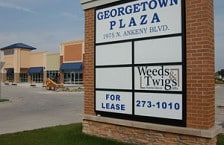Spec retail projects slow amid economic crisis

.floatimg-left-hort { float:left; } .floatimg-left-caption-hort { float:left; margin-bottom:10px; width:300px; margin-right:10px; clear:left;} .floatimg-left-vert { float:left; margin-top:10px; margin-right:15px; width:200px;} .floatimg-left-caption-vert { float:left; margin-right:10px; margin-bottom:10px; font-size: 12px; width:200px;} .floatimg-right-hort { float:right; margin-top:10px; margin-left:10px; margin-bottom:10px; width: 300px;} .floatimg-right-caption-hort { float:left; margin-right:10px; margin-bottom:10px; width: 300px; font-size: 12px; } .floatimg-right-vert { float:right; margin-top:10px; margin-left:10px; margin-bottom:10px; width: 200px;} .floatimg-right-caption-vert { float:left; margin-right:10px; margin-bottom:10px; width: 200px; font-size: 12px; } .floatimgright-sidebar { float:right; margin-top:10px; margin-left:10px; margin-bottom:10px; width: 200px; border-top-style: double; border-top-color: black; border-bottom-style: double; border-bottom-color: black;} .floatimgright-sidebar p { line-height: 115%; text-indent: 10px; } .floatimgright-sidebar h4 { font-variant:small-caps; } .pullquote { float:right; margin-top:10px; margin-left:10px; margin-bottom:10px; width: 150px; background: url(http://www.dmbusinessdaily.com/DAILY/editorial/extras/closequote.gif) no-repeat bottom right !important ; line-height: 150%; font-size: 125%; border-top: 1px solid; border-bottom: 1px solid;} .floatvidleft { float:left; margin-bottom:10px; width:325px; margin-right:10px; clear:left;} .floatvidright { float:right; margin-bottom:10px; width:325px; margin-right:10px; clear:left;}
As the economy tumbles and banks become more cautious in their lending practices, speculative retail projects are diminishing in the metro area.
“We’re seeing exactly what the other developers are seeing,” said John Knapp, a commercial agent with Iowa Realty Commercial, referring to the slowdown in construction of speculative projects.
Knapp said he doesn’t know of any developer who is comfortable putting up speculative retail space right now, adding that vacancy rates are on the rise in many retail centers.
“It’s largely been driven by the banks,” said Jeff Saddoris, a broker with Knapp Properties Inc., noting that two years ago “money was flowing freely through the banking system” and a lot of retail centers were going up on a purely speculative basis, with little or no money down.
In the past six to eight months, however, financial institutions have been less active in lending, a trend that has been exacerbated by the collapse of developers such Regency Homes and Walters Cos., Saddoris said.
Around the time those companies folded, lending started to taper off, construction slowed and banks began requiring larger down payments on speculative projects. Concern with the amount of unleased space in the market is also prompting lenders to require more equity.
And today, Saddoris said, an increasing number of banks are not in the market for speculative projects at all.
“Clearly the environment has changed,” said Tom Stanberry, CEO of West Bank, referring to the attitude of financial institutions when considering whether to extend credit for a retail center or small office building that has yet to secure commitments from tenants.
“In this economic environment, banks are requiring more equity in projects and a higher level of pre-leased space prior to” the start of construction, Stanberry said, adding that in some instances not only are banks asking for personal guarantees from people of significant net worth, but also requiring collateral to shore up those guarantees.
West Bank considers not only the financial strength of the development company and its owners, Stanberry said, but the size and scope of the project as well, adding that each loan is looked at on a case-by-case basis.
Though larger developers may have an easier time obtaining a loan without pre-leasing a percentage of the space, Knapp said, “mom-and-pop” operations have been affected more adversely by the credit crunch.
“The stronger the developer, the less the bank is looking at those leases and the more they are looking at the developer’s bottom line,” he said, concluding that “everybody is taking a more cautious approach at this point.”
For Knapp Properties, being cautious translates into a less aggressive approach to retail development and being careful to pre-lease space in order to secure financing for new construction.
“We would not build purely on a speculative basis without a tenant,” Saddoris said, adding that Knapp Properties, which owns approximately 375,000 square feet of retail space in Greater Des Moines, wants 30 to 40 percent of new space to be leased before beginning construction on any given project.
Rick Tollakson, president and CEO of Hubbell Realty Co., is more optimistic about speculative retail, saying his company currently has three speculative projects under way, including Greenway Crossing in West Des Moines, which is 100 percent leased.
But Tollakson admits that Hubbell has been, for the most part, “fairly conservative,” and though the company has a moderate amount of speculative retail space in its portfolio, it will “see how that leasing goes before we really start looking to anything else.”
Another aspect is the slowdown in demand for new retail stores. Though Des Moines may be faring better than larger coastal markets, “we are not completely isolated,” Saddoris said.
Though the bigger developers are adopting a “wait-and-see” attitude, Knapp said, smaller retailers that deal in non-luxury, necessity products, such as food and fuel, are becoming more prevalent. And big-box stores, such as SuperTarget, are helping to keep smaller operations going.
Hubbell may also be seeing more activity in retail space that is contiguous to its housing developments. As homes are sold and more people move in, more demand is generated for retailers in those areas.
“Despite what the media says, people are still buying houses,” Tollakson said.








